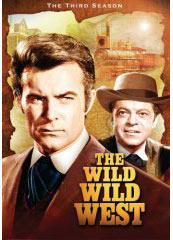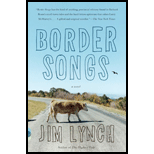Copyright © 2010, Steven E. Houchin
Jim Lynch’s Border Songs is a work of literary fiction set in the Blaine, Washington area along the USA/Canada border. The main character is an unlikely Border Patrol agent named Brandon Vanderkool. He stands out from everyone else at six-eight, and seems to have some sort of dyslexic problem that causes his speech to get mixed up when he is flustered. Despite his size, he isn’t a tough-guy character; instead, he is uncomfortable with most social situations, and has a love for the area’s birds, which draws his attention away from his job. He also has an artistic streak, often taking time out from his patrol duties to construct works of art from leaves or driftwood. His walk is described as a “lope”, and his behavior is a source of amusement and wonder by everyone who knows him.
The border area is plagued by marijuana smuggling and illegal immigration. There are no border fences. Much of the line between the two countries is simply a ditch, with Boundary Road spanning along the USA side, and Zero Avenue running parallel on the Canada side. Some of the characters are dope smugglers, and the reader is taken inside their world of hidden indoor pot farms and hazy, drug-laced parties and business meetings.
Brandon’s father, Norm, struggles to keep his dairy farm afloat despite the aches and pains of age and his wife’s onset of Alzheimer’s. Across the ditch in Canada are dozens of estates that overlook the USA side. Immediately across from Norm, in a modest home, is his America-hating neighbor, Wayne Rousseau, who often incites political arguments across the ditch, just to irritate Norm. Wayne’s daughter, Madeline, is up to her neck in the pot trade. As the story goes on, we learn that Brandon is in love with her. She regards his attempts to woo her with annoyance and worry because she fears the contact is related to his job as a border agent. But, Brandon is oblivious to her involvement in the smuggling business.
Brandon’s love of nature leads him into remote areas where most border agents never venture. This results in a number of spectacular, accidental arrests that only serve to increase his local celebrity. But all he really wants to do is watch the birds and construct spontaneous works of art.
Brandon and the other characters are well developed, but the middle of the book drags; many of the chapters come across as character vignettes without a clear, consistent story line to pull the reader along. I didn’t always feel the “Oooh, what’s gonna happen next?” impulse to turn the page. But, I persisted, and the story picked up in the final one quarter of the book, leading to a thoroughly satisfying ending that has Brandon finally appreciated for who he really is.
_01_small.jpg) It is a sub-genre of science fiction or fantasy that is generally set in a Victorian time period - the industrial 19th century - where anachronistic technology of the time (such as steam power) is adapted in ways more common to our modern time, and alternate histories are often presented. Think of H.G. Wells' The Time Machine, or the futuristic gadgets used in the TV series Wild, Wild West.
It is a sub-genre of science fiction or fantasy that is generally set in a Victorian time period - the industrial 19th century - where anachronistic technology of the time (such as steam power) is adapted in ways more common to our modern time, and alternate histories are often presented. Think of H.G. Wells' The Time Machine, or the futuristic gadgets used in the TV series Wild, Wild West. 
